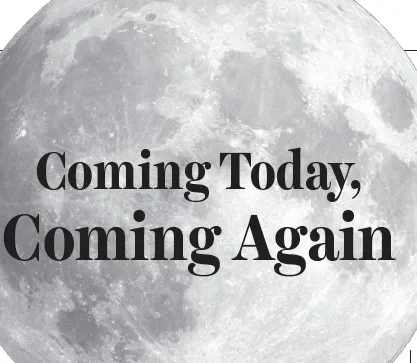There are four meteorological seasons known to all of us as spring, summer, autumn and winter; depending on how near or how far the earth and the sun are, during the course of orbital motion. Then there are four astronomical seasons, the beginning of which is marked by spring equinox, summer solstice, fall equinox and winter solstice.
Each astronomical season like each meteorological season lasts for three solar months rolling out three full moons to the sky gazers. The solar months keep alternating from 30 to 31 days while as a lunar month lasts for 29 to 30 days. This difference can push for two full moons in one calendar month so that an astronomical season has four rather than three full moons. This additional full moon in a season is called a blue moon.
In all, a blue moon occurs because the phases of the moon do not synchronise with the solar calendar. The blue moon is as golden and as bright as any full moon but it is named “blue” in terms of being rare. We might think that blue is common color in nature when we look up at the blue sky overhead or see the endless expanse of a blue ocean.
But among all the hues found in rocks, plants and flowers, blue is surprisingly scarce. However, it may sometimes so happen that the full moon gets a blue tinge which is due to certain conditions of atmosphere. Blue moons usually fall in the months of February, May, August and November. These come as frequently as two to three years.
If we take a cursory look at the bygone years, we find that blue moons have appeared on 21st November 2010, 20th August 2013, 21st May 2016, 18th May 2019, 22nd August 2021. This year we are observing it today on 30th August while the previous full moon had appeared on the 1st of this month. The optimal time to view this phenomenon is between 6 to 7 pm, Indian time.
Among all celestial objects moon is nearest and dearest to the dwellers on earth. Her appearance is essential for social events like Eid and faithful practices like karva Chauth, strengthening the relation between spouses. Due to its serenity and cool touch, it is given a motherly attribute namely Chandra maa’n meaning mother moon or more popularly zoone mouj in the local dialect.
There have been many profound space-missions and spaceflights to outer space. In that context, the success of mission Chandrayaan has been a recent glory. But a human mission to these places needs some more preparation and more confidence.
Four such missions in the past namely Soyuz 1, X-15 flight 191, Soyuz 11, and STS-107 ended as fatal failures as their crews died during the return. Though moon is the nearest, yet it is the farthest, we humans could land in space and place our foot to step on, quite a few times.
We find the full moon once in a month but sometimes the sky is gracious enough to stream two. At many instances in life, the second coming or coming again is the most cherished happening.
It sounds good when the children rhyme rain-rain come again or a love-letter pledge to come again especially when the lovers live across the boundaries.
Kahlil Gibran in Farewell writes “but should my voice fade in your ears, and my love vanish in your memory, then I will come again.” Even the movies are getting more popularity and better meaning by bringing out their sequels, be it Krish l and ll, Dhoom and Dhoom 2, Hera Pheri and Phir Hera Pheri 2, Dabangg and Dabangg 2, Housefull and Housefull 2, Race and Race 2, Don l and Don ll and so on. According to Orson Welles “If you want a happy ending, that depends, of course, on where you stop your story.” Similarly, the so called second coming of Christ is linked with much hype and much hope. The most appealing poem in this regard is Thy Kingdom come again, carrying the following powerful lines.
The power that lies within you
Comes forth once again
Heed the voice that is calling
Come to me, come to me
For thy kingdom
Awaits your crowning
Come to me.
The second coming of Messiah is more about ending an existential crisis than fulfilment of a Godly promise. It is better necessitated by circumstances than by prophecy.
All around us, there are a lot of unfinished stories, unattended miseries, awaited verdicts, rising hopes, blind faith, silent prayers and victimhood which have to be addressed both for the sake of justice and accomplishment.
There has to be a fair climax to everything be it a calamity or a celebration for which someone or something has to come again.
Dr. Qudsia Gani, Assistant Professor, Dept. of Physics, Govt. College for Women, Srinagar






